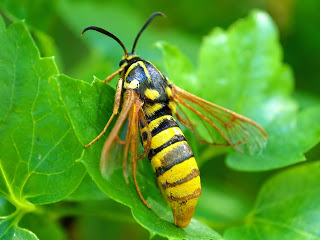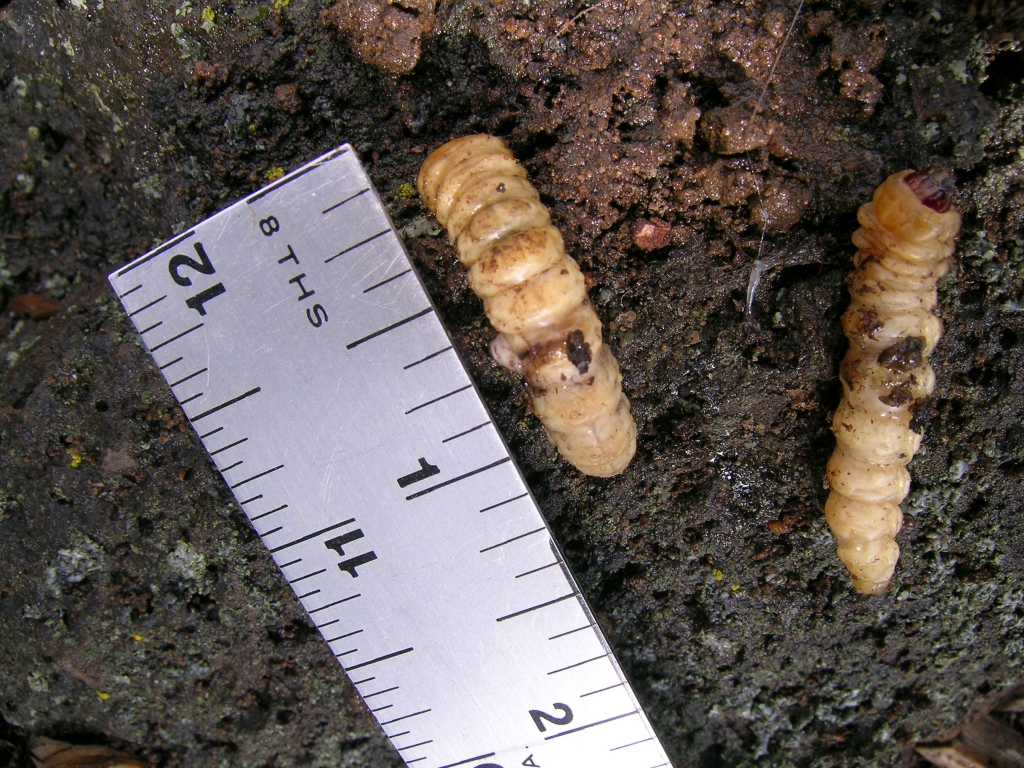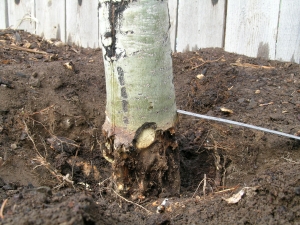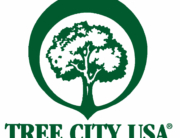The American hornet moth, Sesia tibialis, is a pest that can be found attacking poplars, willows and aspens. Also sometimes known as the Cottonwood crown borer, it is found in many areas in North America. Over the past year, we have seen several infestations in the Central Oregon region.
Adults are about an inch long and look similar to a wasp, but are actually of the moth order (Lepidoptera.) They are black with yellow stripes and accents and have clear wings. The adults typically emerge from an infested tree in the late spring through summer by boring a ¼ inch hole near the base of the tree. As the adult exits, a brown paper-like pupal case is left protruding from the tree. The adults only live for four to ten days, but the females will deposit 200-600 (that’s right) eggs in the cracks and crevices of the tree. The larvae spend two years in the tree—continually damaging the tree.
The larvae bore into the wood of the tree, forming extensive tunnels, often at the base of the tree. The tunnels are about ½ inch in diameter and three to five inches long. The larvae tend to feed in the lower trunk, eventually girdling the tree. Any sized tree can be susceptible to the American hornet moth, but the smaller the tree, the greater the damage. You can see a recent tree removal here and how damaging the insect was to the tree.
So, what to do about the American hornet moth?
As always, the best defense against pests is a healthy tree!
If the pest has attacked the tree, there are a few methods to help control the spread of it:
- Physical control. For infestations in a few trees, you can try to physically remove the larvae from their tunnels. Dig around the base of the tree to expose tunnels in the root crown. Cutting away dead bark and wood will further expose additional tunnels. Pushing a stiff wire into the tunnels can be very effective at killing the feeding larvae and pupae. Check back in a week to see if there are any new signs of larvae.
- Nematodes. An insect feeding nematode, Steinerne carpo-capsae, can be suspended in water and injected into the tunnels with a squeeze bottle applicator. These nematodes seek out the larvae and parasitize them. Talk to a reputable nursery or garden supply place for more information.
- Insecticide. While we don’t actively advocate for chemical use, an insecticide sprayed on the lower three feet of the tree prior to the emergence of adults can kill the next generation of larvae in the tree. We recommend getting good solid advice before using pesticides on trees.
- Tree removal. In some cases, removal of the tree is the base case scenario.
If you think you might have an issue with the American hornet moth (or any other tree pest), please contact us and we can help you decide on an action plan. Our goal is to maintain and increase the health of our urban forests and as Certified Arborists, we can assess your situation and help you make good decisions about your trees.
Stay cool out there!
–Mike D., 541-480-4223








